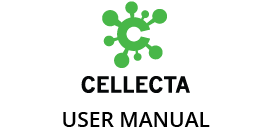- Before use, thaw the provided Master Plates with Hybridization Master Mixes, vortex the plate in an Eppendorf plate shaker, and centrifuge the plate with a benchtop mini plate-spinning centrifuge or any bucket centrifuge (e.g., 2,000 rpm, 1 min) to collect droplets to the bottom of the wells.
- Remove the seal from the Master plate and transfer 5 µl of Hybridization Master Mix from each well of the Master plate into 1 to 8 new 96-well PCR plate(s) compatible with a cell sorter. Importantly, use a new tip for each well of the Master plate to avoid cross-contamination of barcoded reverse GSPs between different wells. A Master plate with wells of unused Hybridization Master Mix can be stored at +4°C for up to 6 months.
- Load the cells into each well. For this step, there are two options depending on the application: (a) Sort cells by flow or (b) pipette a defined number of cells into each well.
(a) For sorting by flow cytometry: Load the 96-well sorting PCR plate with 5 µl of pre-aliquoted Hybridization Master Mix into the motorized stage holder. Follow the single-cell sorting protocol as per the specific instrument to sort single cells for experimental samples. We recommend including a control well for your plate by sorting 100 cells in one of the wells of this plate. This control well containing cells before sorting, can be used as a positive control to ensure cellular RNA integrity after sorting and for troubleshooting purposes.
(b) For deposition of a pool of T or B cells: Wash and adjust the concentration of the cells in 1xPBS buffer to 100 cells/µl using a hemocytometer. Deposit 1 µl on the side wall of each well in the plate with 5 µl of pre-aliquoted Hybridization Master Mix. - Immediately after sorting or deposition, seal the plate, and use a benchtop mini plate-spinning centrifuge (or any other centrifuge) to spin the plate for 10-15 secs. This will propel any drops with cells that are on the side walls of the wells down into the buffer. You can proceed with library prep immediately or freeze and store the plate(s) at -80°C prior to use for the scAIR profiling experiment. To reduce sequencing cost, up to 8 plates (e.g., from different experiments) could be run together for the follow-up scAIR-NGS protocol.
Last modified:
9 July 2025
Need more help with this?
Contact Us

